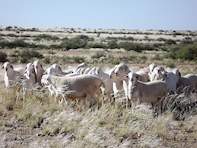
In December 1947, a number of Van Rooy sheep breeders assembled at Colesberg and established the Van Rooy Sheep Breeders Association of South Africa under the guidance of chairman, Mr. MA du Plessis of Steynsburg.
Van Rooy Sheep Breeders’ Association of South Africa was formed with the objective of protecting the growth and the interests of the Van Rooy sheep. Unfortunately, in 1950 the association was disbanded due to the influence of the very high wool prices. Farmers lost interest in the organisation and it remained inactive for several years until 1960 when it was resuscitated under the chairmanship of Mr. NL Steyn of Colesberg.
Today, the Van Rooy Sheep Breeders Association of South Africa remains actively involved in the sheep industry, with membership increasing each year. The association is continuously rendering necessary services to its members, industry roleplayers and prospective breeders and members.
The association offers farmers an inspection service, conducted by its appointed inspectors, in order to improve the quality standards of the breed. Stud animals are tattooed in their right ear for identification.
The association helps Van Rooy farmers purchase their animals to ensure pure breed animals are procured and the Van Rooy Sheep Breeders’ Association also hosts a National Championship biannually where breed quality is more readily discernible.
Annual sales on selected ram ewe also occur through the association and its also hosts a programme which offers Van Rooy farmers access to seminars and lectures about the information pertaining to the breeding industry.
The Van Rooy Breeders’ Association of South Africa has been formed to ensure impeccable breed quality and facilitates collaboration for Van Rooy farmers who have a common interest and goal.
 Sheep are commercially farmed for either meat or wool, but certain breeds yield good quality and quantity of both. In this article, we will ...
Sheep are commercially farmed for either meat or wool, but certain breeds yield good quality and quantity of both. In this article, we will ...